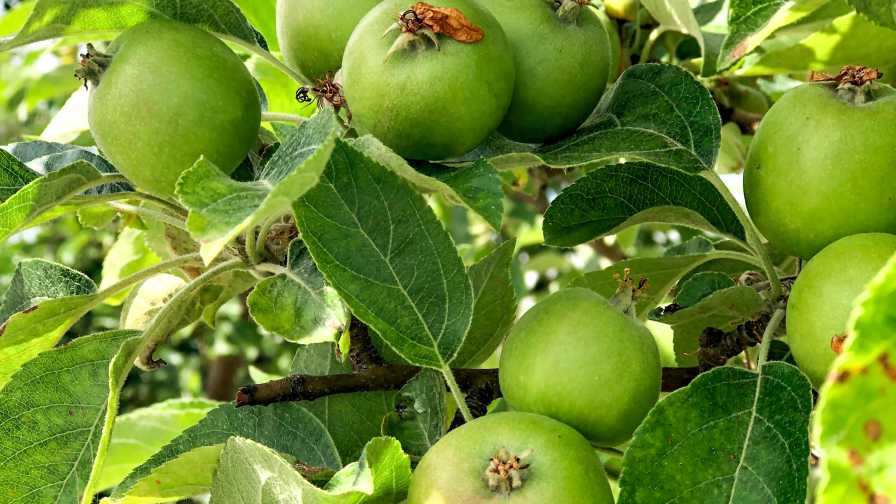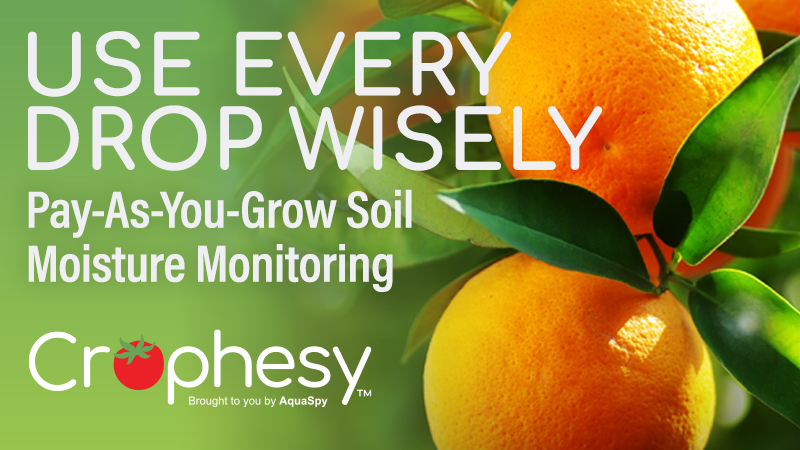Organic Fruit Growing Guidance From Industry Experts

Organic apples grown at a farm in Hotchkiss, CO, where the grower successfully used an Attune Agriculture adjuvant in his spray program. Photo courtesy of Attune Agriculture
Washington State cultivates 16,191 acres of certified organic orchards, accounting for 13.9 million boxes and 252,000 tons of certified organic apples. Those are just a few nuggets of information that a fruit grower might not know about organic agriculture, courtesy, in this case, of Kyle Hartmeier, an Account Manager with Verdesian Life Sciences in the state of Washington.
There are plenty more FYIs where that came from, thanks to Hartmeier and more than a dozen of his industry counterparts. Listed below are their responses regarding the current state of organic fruit growing:
BUCKING THE CONVENTIONAL
Innovation Driven: “Large farming operations see value in organics and increasingly include organics as a part of their overall product offering for their clients. This has driven a lot of innovation on the farm, not only with the organic sector but with conventional farms wanting to incorporate more environmentally benign products into their operations.” — Lori Berger, Technical Services and Sustainability Manager, Western U.S., AgBiome Innovations
Added Flexibility: “Among conventional growers there has been a trend to transition portions of their operations into organic production. Although organics represent a small percentage of overall crop production, I think the grower wants to have some added flexibility to provide both organic and conventional produce to accommodate the shifting needs of the consumer. Although organic certification is not the goal, conventional growers are increasingly aware of the benefits of natural biocontrol products that help with resistance management, MRLs (maximum residue levels), and biodiversity in the soil.” — Ernest “Boomer” Cardinale, Global Marketing Manager, Ornamentals Professional and Specialty Solutions, BASF
Better Yields: “In regard to plant nutrition in organic farming, there is a gap closing toward conventional practices. In some cases, we are seeing better yields in organics compared to conventional operations. While organic production may never possess the pesticides/herbicide materials, there are benefits to sustainable practices with organic materials. As soil health prospers under proper nutrient management practices, there is a trickle-down effect of benefits that develop in both plant resistance to stress and disease.” — Jeffrey Ziehmer, CEO, Ferticell
Bundled Offer: “I’m not sure this is big news, but many buyers need to provide organic fruit, so if growers can produce both organic and conventional, the bundled offer seems to be a good option in terms of marketing. Also, there seems to be a better market for off-spec fruit, which can go into organic baby food and other organic processed goods.” — Peter Bierma, President, Sym-Agro
Organic Transition: “Organic fruit production continues to rise as an increasing number of fruit producers are working to meet consumer demand, which includes transitioning part, or in some cases all, of their operations to organic acreage. Growers who follow IPM (integrated pest management) practices are by and large already using products that are also certified to be used in organic production. Organic products are largely exempt from residue tolerances and feature a short REI (restricted-entry level) and PHI (pre-harvest interval). This offers them the flexibility they need to manage their farm operations, grow, and market their products in today’s dynamic agricultural environment.” — Mike Allan, Vice President, North America, Certis USA
Never Been Better: “Growing fruit organically is in as good a place as it has ever been.” — Seth Elkington, PNW Sales Manager, Agro-K
MARKET SPEED BUMPS
Slight Slowdown: “We noticed that the organic market is still growing but not as fast as the past years. We do not see similarly exponential growth from conventional farming transitioning to organic acreage than in recent years.” — Brett Cranston, Sales Manager, Pacific Northwest, Kemin Crop Technologies
Increased Competition: “Organic fruit production continues to grow in acreage; however, the premium over conventional fruit to the grower in many cases has continued to decrease. Input selection and efficacy of organic fertilizers continues to be a challenge as growers struggle to adapt to less efficacious fertility products than in the conventional market. New organic product development by fertilizer manufacturers continues, and novel technologies are starting to make their way into the organic fertilizer market. As the efficacy of these products is demonstrated, there will be a shift to more refined inputs that perform with higher consistency and efficacy over traditional organic fertilizers. This will allow organic producers to decrease cost and increase harvestability of their crop. The organic calcium and carbon markets are ones where we see a lot of new competition arising this year.” — Danny Klittich, Agronomist, Redox
Foreign Influence: “In California, the Mexican competition was challenging for berry growers. There was a lot of produce coming from Mexico that was forging the market and making the price drop significantly, forcing organic producers to sell at the same price as conventional. Therefore, some organic farms left the field and came back to conventional because they couldn’t compete with the Mexican import.” — Richard Jones, Sales Manager, California, Kemin Crop Technologies
Over-Production: “Overall for the last several years, the apple market, as a whole, has been doing pretty well. Recently though, a lot of acres of production have been planted that have over-saturated foreign and domestic markets. This over-production has resulted in far lower prices to growers, which will cause some obvious financial strain on the industry as a whole.” — Hartmeier
THE PEST OF THE STORY
Matter of Choice: “There are so many pest control offerings out there. So, when you talk with a grower or with the distributors, they barely have an idea of how effective they are and if their efficacy matches what happens on conventional acreage. The challenges are: How to filter them? Which one will fit their need? How to reach out to the right people to get more information about how the product is going to perform?” — Vincent Livengood, Sales Manager, Central, and Northeast, Kemin Crop Technologies
Looking for an Edge: “It’s no secret that organic tree fruit growers are limited in their options for treating insect species like codling moth or navel orangeworm. While focusing on using the three major categories of organic insecticides — organic chemicals, viruses, and sprayable pheromones — farmers have struggled to balance overall effectiveness with the high costs associated with treating these detrimental pests. Looking for ways to get the most out of every spray with the narrow range of tools that can be used in organic will always be on the forefront for every grower.” — Maureen Akins, Vice President of Technology, Attune Agriculture
LOOKING TO THE FUTURE
Science Matters: “All organics are not equal. There are numerous products available, but not all of them are made equal. Some products are not performing the way organic farmers may expect. So, the farmer’s challenge is how to differentiate the potential of the products available. Fruit growers should rely on the ones available that are scientifically tested whereas some others are not.” — Cranston
Streamline Registration: “Despite internationally recognized third-party organic certifiers, like OMRI, many states require additional regulatory steps for organic product registration. This slows the regulatory review process of new technologies and creates a manufacturing pipeline that is frustratingly slow. As the organic market continues to grow, we need to streamline registration across states, and we will see new and substantially better organic fertility products come into the market and become the new mainstay.” — Klittich
More is Better: “Plant nutrition, soil sampling, and properly feeding plants are very important to producing quality and maintaining plant health through the season. Generally, high-production fruits require more nutrients than can come from compost alone, and improper feeding can significantly reduce yields and lead to increased disease pressure.” — Alexander Duffy, National Product Manager, Timac Agro USA
PGR Clarification: “Plant hormones are a group of naturally occurring organic substances that are produced in one part of the plant and translocated to another part, where they stimulate a physiological response. Plant growth regulators, on the other hand, are either naturally occurring or a synthetic organic substance, which, in small quantities, influences some qualitative and/or quantitative aspects of plant growth. Since naturally occurring substances are also considered PGRs, there is a common but erroneous impression that all PGRs could be used in an organic production system.” — Poliana Francescatto, Global Technical Development Specialist for Plant Growth Regulators, Valent BioSciences










